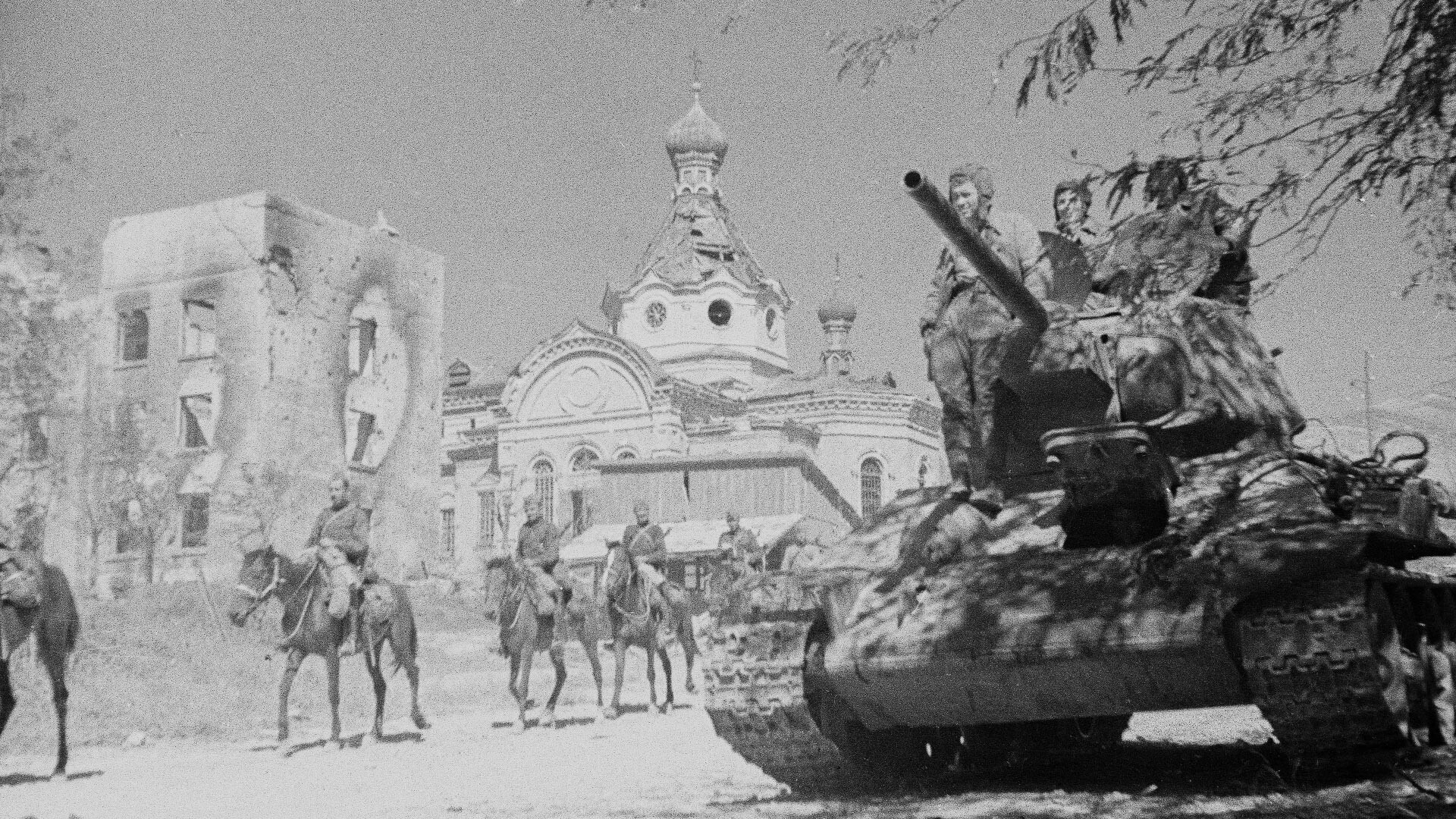
Soviet troops entering Novorossiysk.
Alexander Sokolenko/SputnikAt the end of 1942, Soviet forces turned a potential disaster at Stalingrad into a brilliant victory. They encircled the Wehrmacht’s 6th Army and 4th Panzer Army units, totalling 330,000 men, which had got mired in the city, suppressed all attempts by Generalfeldmarschall Erich von Manstein’s troops to relieve them and also smashed ten Italian and Romanian divisions nearby in the Middle Don.
Having, thus, deprived the surrounded German troops of their last hope of rescue, in January 1943, the Red Army began methodically to eliminate the “pocket”. During ‘Operation Ring’, the enemy forces were overwhelmed and split into several isolated groups that eventually surrendered on January 31 and February 2. More than 91,000 soldiers, 24 generals and Commander of the 6th Army Generalfeldmarschall Friedrich Paulus were taken prisoner by Soviet forces.
“The glorious epic of Stalingrad marks a decisive turning point in the just war of the civilized world against Hitler’s Germany… Waves of Fascist hordes were smashed against the Soviet rock… The German 6th Army, which swept through France like a hurricane, is completely destroyed,” Maurice Thorez, leader of the French Communists, wrote rapturously.
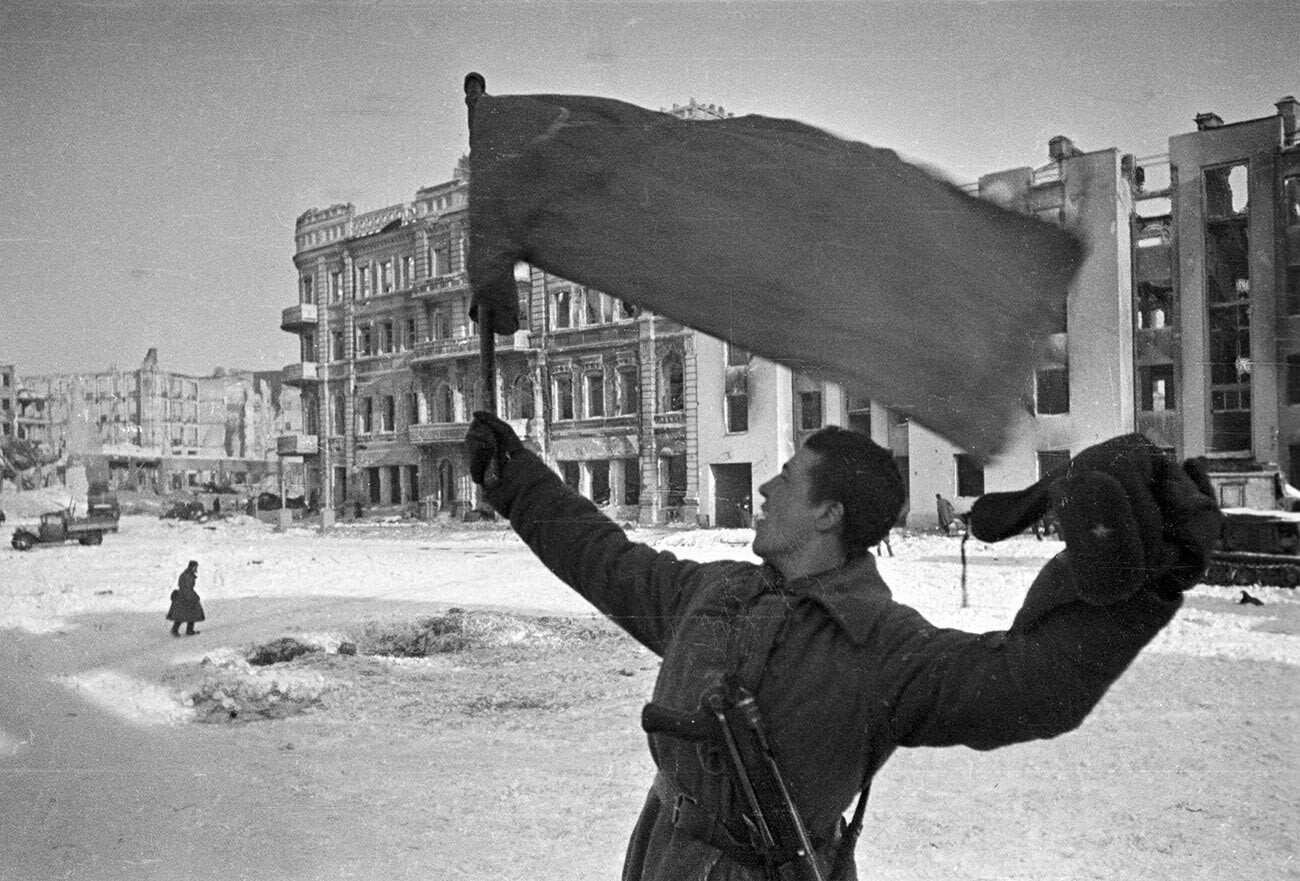
Soviet troops in Stalingrad, January 1943.
Georgy Zelma/SputnikAs a result of the debacle on the Volga, Ewald von Kleist’s Army Group A, which had been advancing towards the oil fields of the Caucasus, found itself in danger of being cut off from the main forces. Pursued by Soviet troops, it began to withdraw from its occupied positions. In heavy winter fighting, the Red Army liberated vast areas of the south of the USSR. In February, soldiers of the 46th Army pulled down German flags from the two summits of Elbrus, which had been there since August 1942, and hoisted Soviet flags instead.
The Soviet troops advancing from Stalingrad raced towards Rostov-on-Don to cut off Kleist’s escape route. Fierce resistance by the enemy, however, didn’t allow them to liberate the city until February 14. By then, Romanian and German troops had had enough time to withdraw to defensive positions on the River Mius and the so-called ‘Blue Line’ on the Taman Peninsula, which protected the route to the Crimea. And there the Red Army offensive was halted.
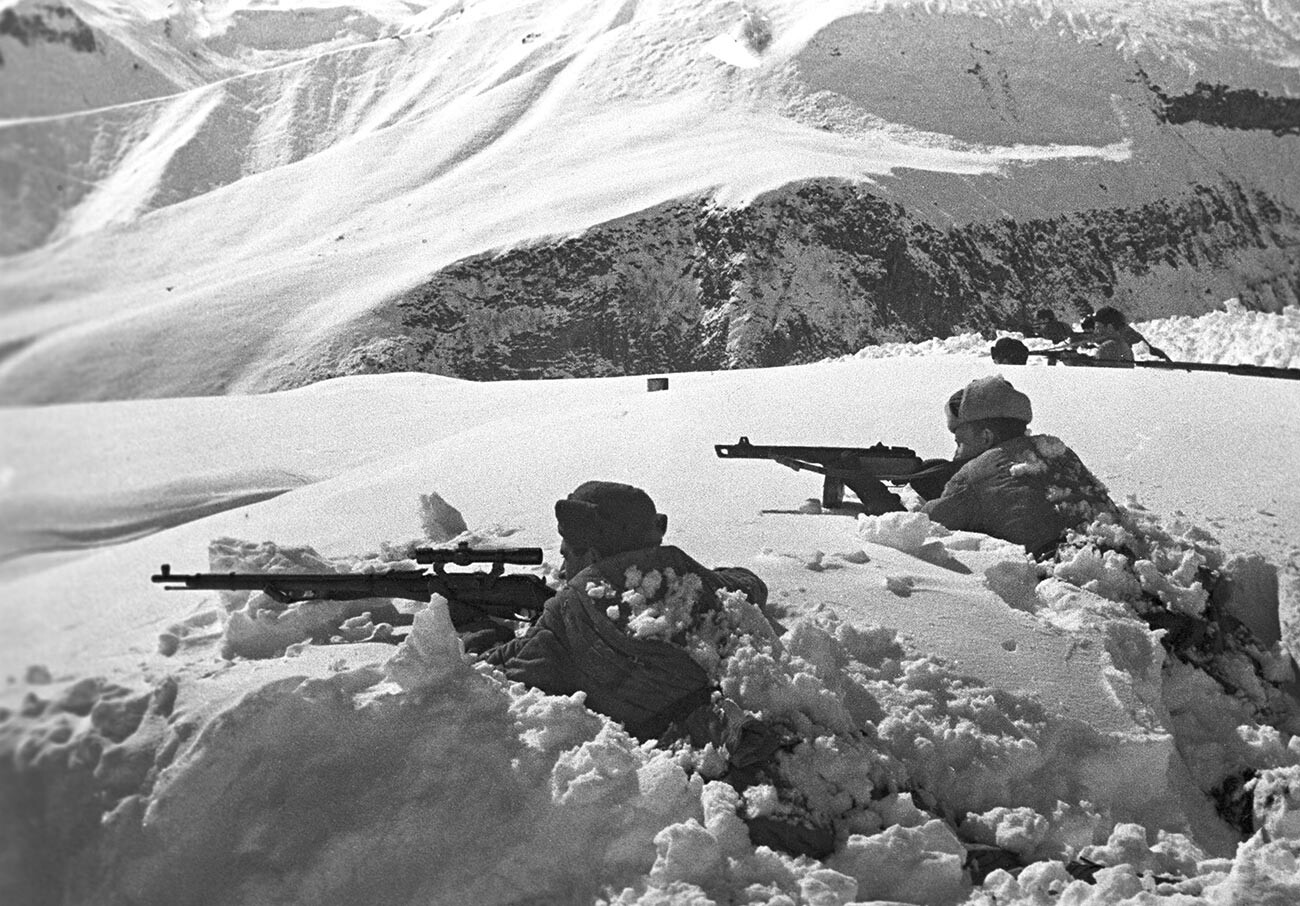
Soviet troops during the Battle of the Caucasus.
Maks Alpert/SputnikThe Germans and their allies were much less fortunate near Voronezh and Kursk, where Soviet forces under the command of Colonel-General Filipp Golikov had carried out several successful offensive operations. As a result of their rapid breakthrough, troops of as many as three states were defeated: the German 24th Panzer Corps and the main forces of the Hungarian 2nd Army and German 2nd Army, as well as the Italian Alpine Corps.
“Kharkov lay ahead,” recalled Marshal Kirill Moskalenko, then commander of the 40th Army: “Ukraine’s second capital drew our troops like a magnet. And neither enemy resistance nor a raging blizzard could hold back that impulse… Hitler’s commanders clung to Kharkov tenaciously. They realized that losing it would mean that they would not be able to hold on to the Donetsk coal basin either.” Nevertheless, on February 16, the city was liberated by the Red Army.
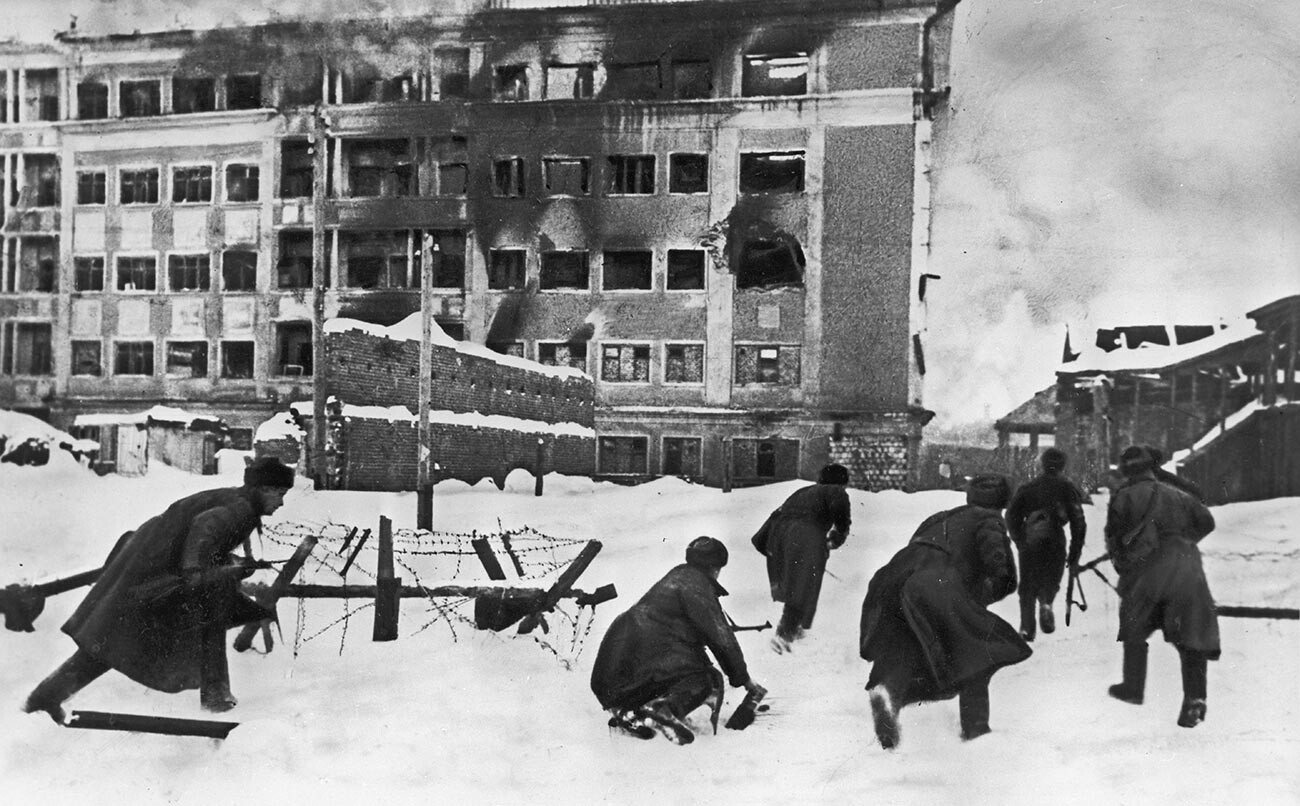
Red Army soldiers during the fight for Voronezh.
SputnikWhile battling for the liberation of Ukraine, the Red Army was doing all in its power to reach the important strategic line of the Dnieper River. On February 20, during ‘Operation Gallop’, Soviet tanks effected a breakthrough and ended up near Zaporozhye, where the headquarters of Generalfeldmarschall Erich von Manstein’s Army Group South was located and which Adolf Hitler was visiting at the time. “There was not a single unit between us and our enemy! I was, therefore, very relieved when, in the evening of that day, Hitler flew to his headquarters,” Manstein wrote in his book of memoirs, ‘Lost Victories’.
It soon became clear, however, that the attempt to capture the Dnieper River crossings was premature. The rapid advance had stretched the lines of communication of Red Army units, there was a shortage of fuel and the enemy, whose strength was initially underestimated by the Soviet military command, went on the counteroffensive. As a result, Manstein not only eliminated the breakthrough, but also managed to recapture Kharkov and Belgorod. “The word Kharkov magically attracted the soldiers and mid-level leadership of the army,” recalled the Generalfeldmarschall: “The SS Panzer Corps wanted to present the newly conquered capital of Ukraine (Kharkov had been the capital of the Ukrainian Soviet Socialist Republic until 1934 - Russia Beyond) as a token of victory to ‘their Führer’ and were smashing their way towards it via the shortest route.”
With the onset of the spring thaw, the sides took a short respite and began to prepare for the summer campaign. The main confrontation was expected to take place in the area of the so-called Kursk Salient - a west-facing bulge, up to 150 km deep and up to 200 km wide, where large forces of the Red Army were concentrated.
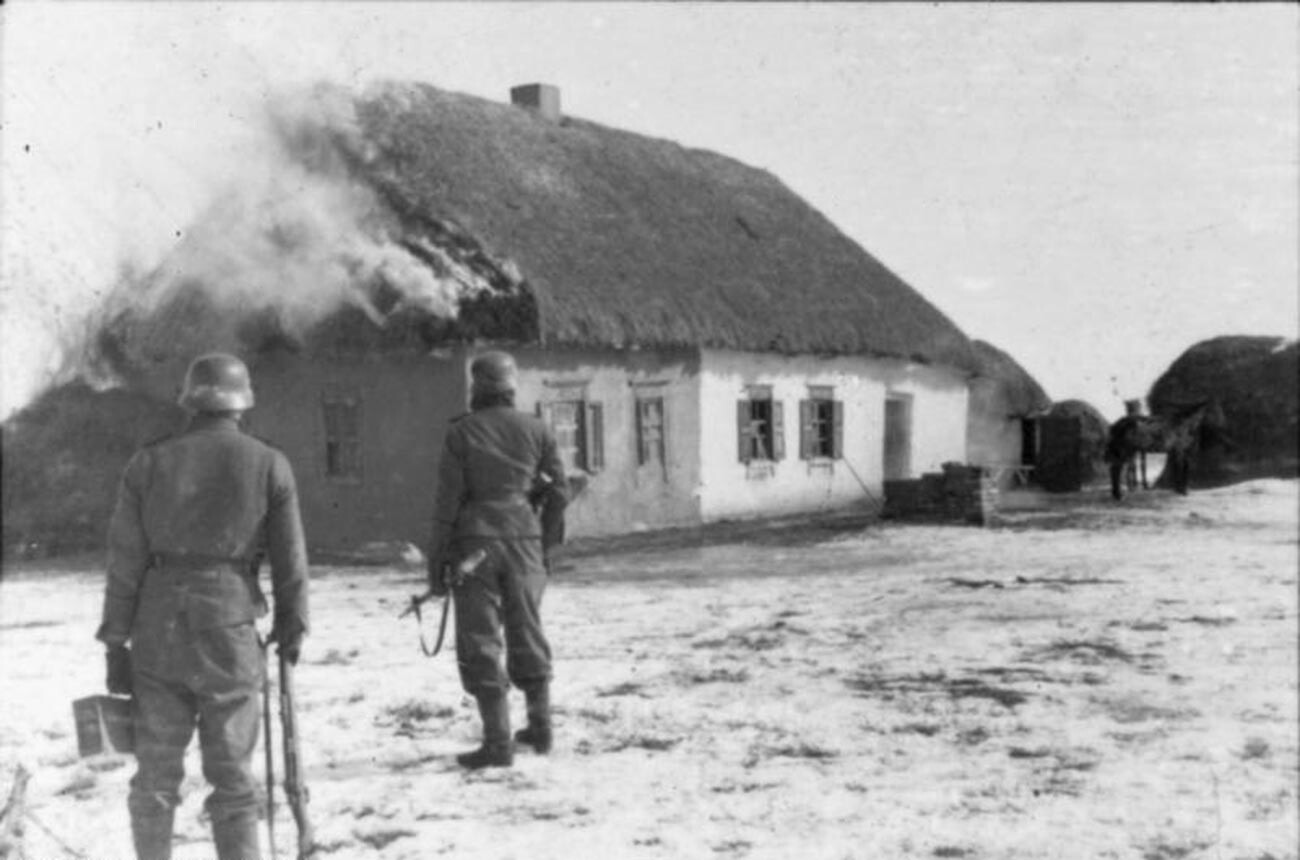
German troops near Kharkov.
BundesarchivMeanwhile, in the north of the USSR, Soviet forces finally succeeded in breaking the Siege of Leningrad. Through a corridor opened up south of Lake Ladoga on January 18, 1943, in ‘Operation Spark’, the city which had lived through a terrible famine began to receive regular food supplies again.
Not stopping there, the Red Army continued its offensive, intending to defeat the whole of Army Group North. The large-scale Operation Polar Star, however, ended in failure. By early April, Soviet troops had advanced only a few kilometers in each direction, while suffering significant losses - 280,000 killed and wounded (the Germans lost over 78,000 men).
“Following the brilliant victories on the Don and Volga [rivers], the failures on this front were depressing,” Marshal of Artillery Nikolay Voronov wrote bitterly. “It was clear that a major operation should not have been launched here. Our powerful hardware requires open spaces, but here it was bogged down in swamps. Again, I felt a growing inner irritation against those who made these fine plans for an operation without bothering to study the nature of the terrain, lines of communication or weather conditions… We were condemning our equipment to destruction and losing many men and countless munitions by attacking in locations that were obviously hopeless.”
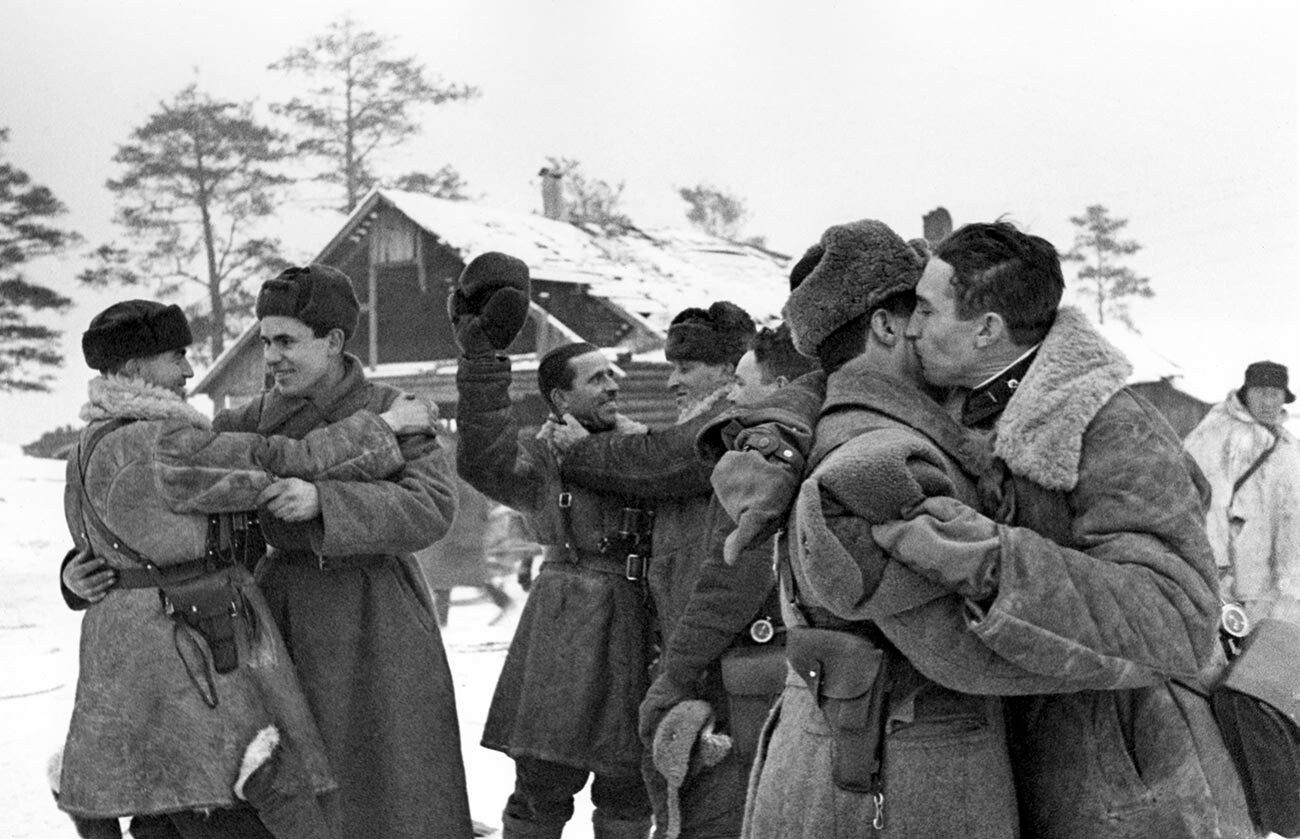
Soldiers of the Volkhov and Leningrad Fronts meet and hug after managing to open a narrow land corridor.
Semyon Nordshtein/TASSThe threat to Moscow was conclusively eliminated in spring 1943. The so-called Rzhev-Vyazma Salient had been formed in the course of the Soviet offensive in early 1942. Having held and reinforced this bridgehead, which was just 150-200 km from the capital, German troops were able constantly to threaten the country’s most important city. All of the Red Army’s attempts to eliminate the salient were accompanied by major losses and ended in failure.
Following the change in the strategic situation after the Battle of Stalingrad and the rapid Soviet advance, the Germans decided to abandon the bridgehead. In March, in the course of ‘Operation Büffel’, Generalfeldmarschall Walter Model’s 9th Army and units of Generalfeldmarschall Günther von Kluge’s 4th Army withdrew from the salient, reducing the length of the front in this sector from 530 km to 200 km and releasing considerable reserves in the process.
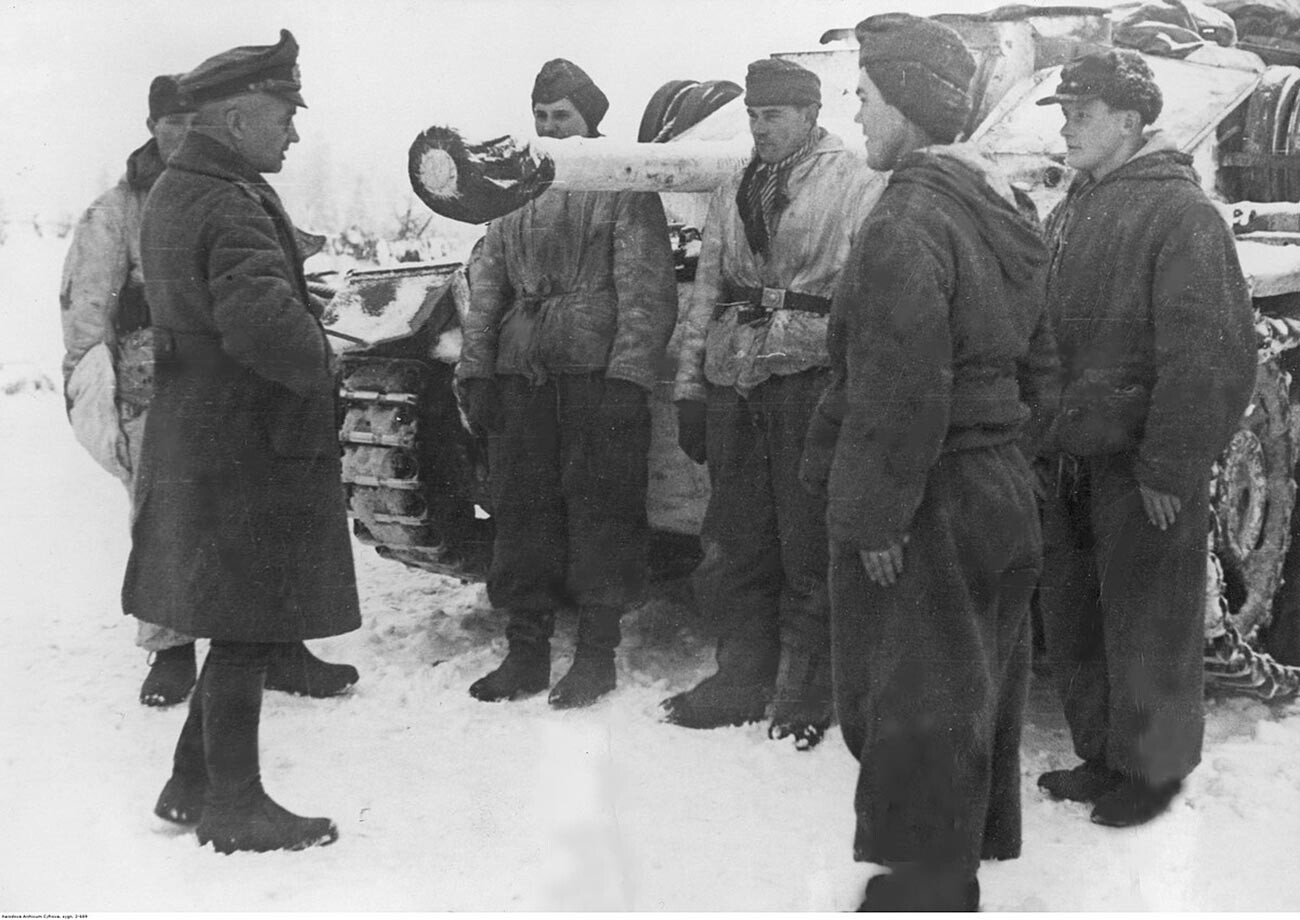
Generalfeldmarschall Walter Model near Rzhev.
Narodowe Archiwum CyfroweOn July 5, 1943, one of the largest battles in history began at the Kursk Salient: It involved up to four million men, 12,000 airplanes and 13,000 tanks and self-propelled guns. The intention of the German command was to employ two massive convergent strikes to split, encircle and smash the Soviet troops and, thus, regain the strategic initiative in the war, lost in the wake of the Battle of Stalingrad.
The Red Army put up dogged resistance to the Germans, only permitting them to advance around a dozen kilometers. “The fighting was so heavy and intense that I still perfectly clearly remember feeling that by the end of the day I would have been grateful to be injured or killed…” recalled Yevgeny Okishev, commander of a mortar company. “It was just that my nerves were so strained by then and, on top of that, it was very hot and there was nothing to eat… We were dug in on high ground, all approaches to which were exposed to German fire.”
Having withstood the brunt of the German attack, Soviet troops mounted a large-scale counteroffensive on July 17 and pushed the enemy back to their initial positions. “We suffered a decisive defeat as a result of the failure of Operation Citadel,” Heinz Guderian wrote in ‘Panzer Leader’. “The panzer troops, brought up to strength with such great difficulty, were put out of action for a long time because of their huge losses in personnel and equipment… It goes without saying that the Russians hastened to exploit their success. And there were to be no more quiet days on the Eastern Front. The initiative had fully passed to the enemy.”
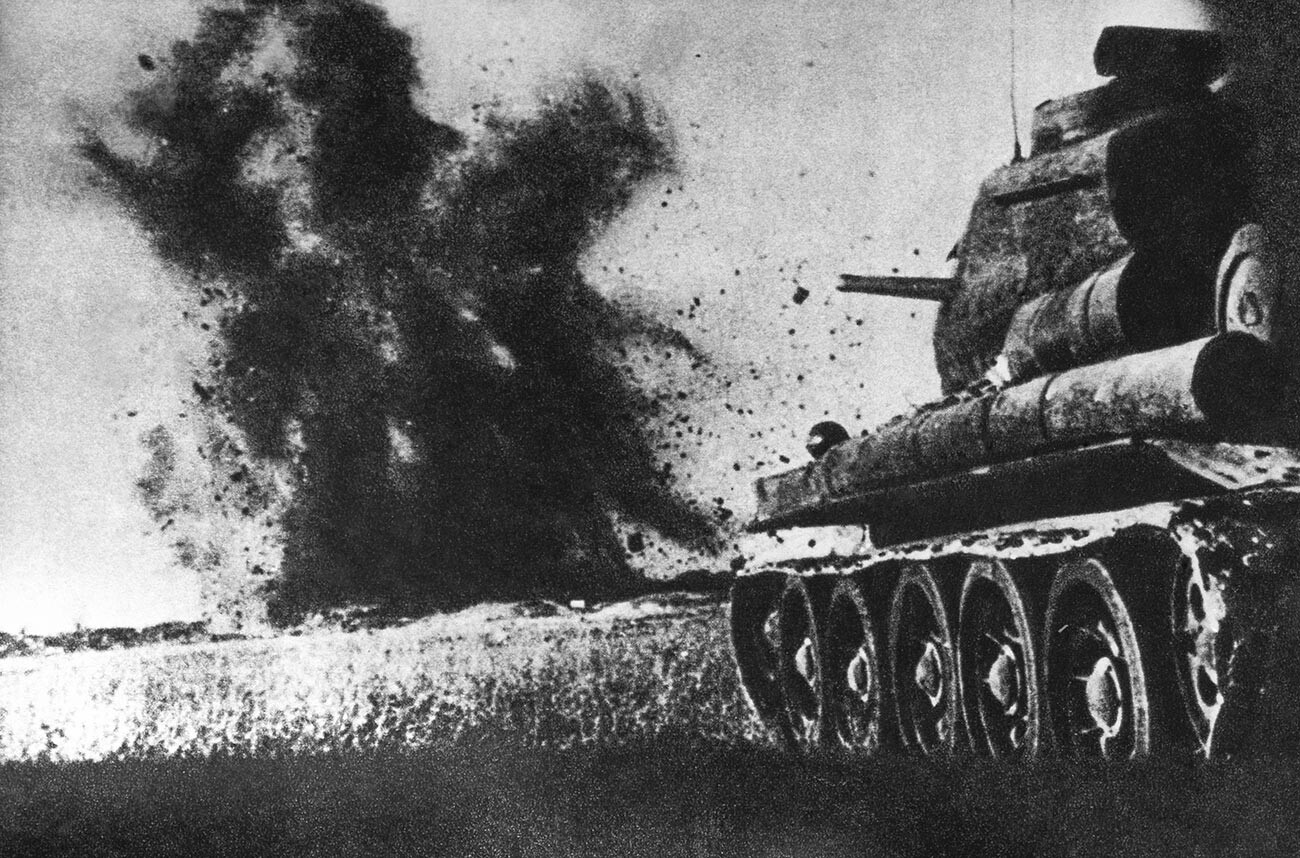
The Battle of Kursk.
TASSEven before the end of the Battle of Kursk, the Red Army started trying to break through enemy defenses at other sectors of the Soviet-German front, in particular in the area of the defensive line on the Mius River and in the course of the ‘Mga Offensive Operation’ outside Leningrad. Despite setbacks, the operations allowed a number of German divisions to be pinned down and prevented from taking part in ‘Operation Citadel’.
After the triumph on the Kursk Salient, the offensive by Soviet troops rapidly gained momentum: In August, the Mius-Front was breached, the liberation of the Donbass began and Kharkov was regained. In September, the Red Army dislodged the Germans from the ‘Blue Line’ on the Taman Peninsula, forcing them to evacuate to Crimea, and also liberated Smolensk and entered the territory of Byelorussia.
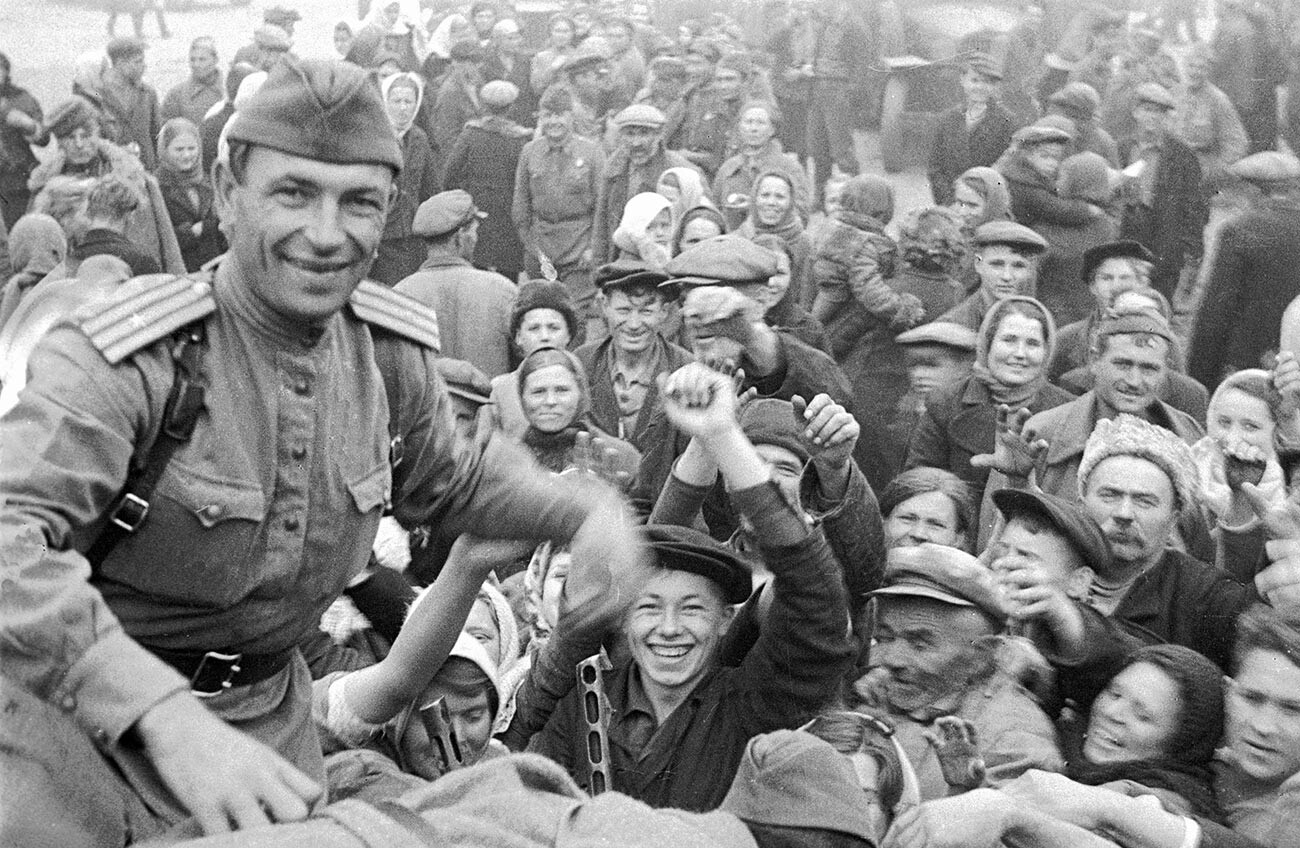
People greeting soldiers in liberated Poltava.
Izrail Ozersky/SputnikThe Wehrmacht was retreating, intending to take up positions along the Dnieper. The river was a major element in the network of German defensive fortifications stretching all the way from the Baltic to the Sea of Azov - the so-called ‘Eastern Rampart’ (Panther-Wotan Line), which, to quote Hitler, was designed to “defend Europe from Bolshevism”.
The Soviet command realized that the enemy should not be given time to dig in on this strategic perimeter. The Red Army was pushing towards the river, literally “on the heels” of the Germans. On getting to the bank, divisions and regiments did not wait for a general signal, but independently began to cross to the opposite bank, using whatever means they had at their disposal and took up defensive positions, incurring furious enemy counterattacks.
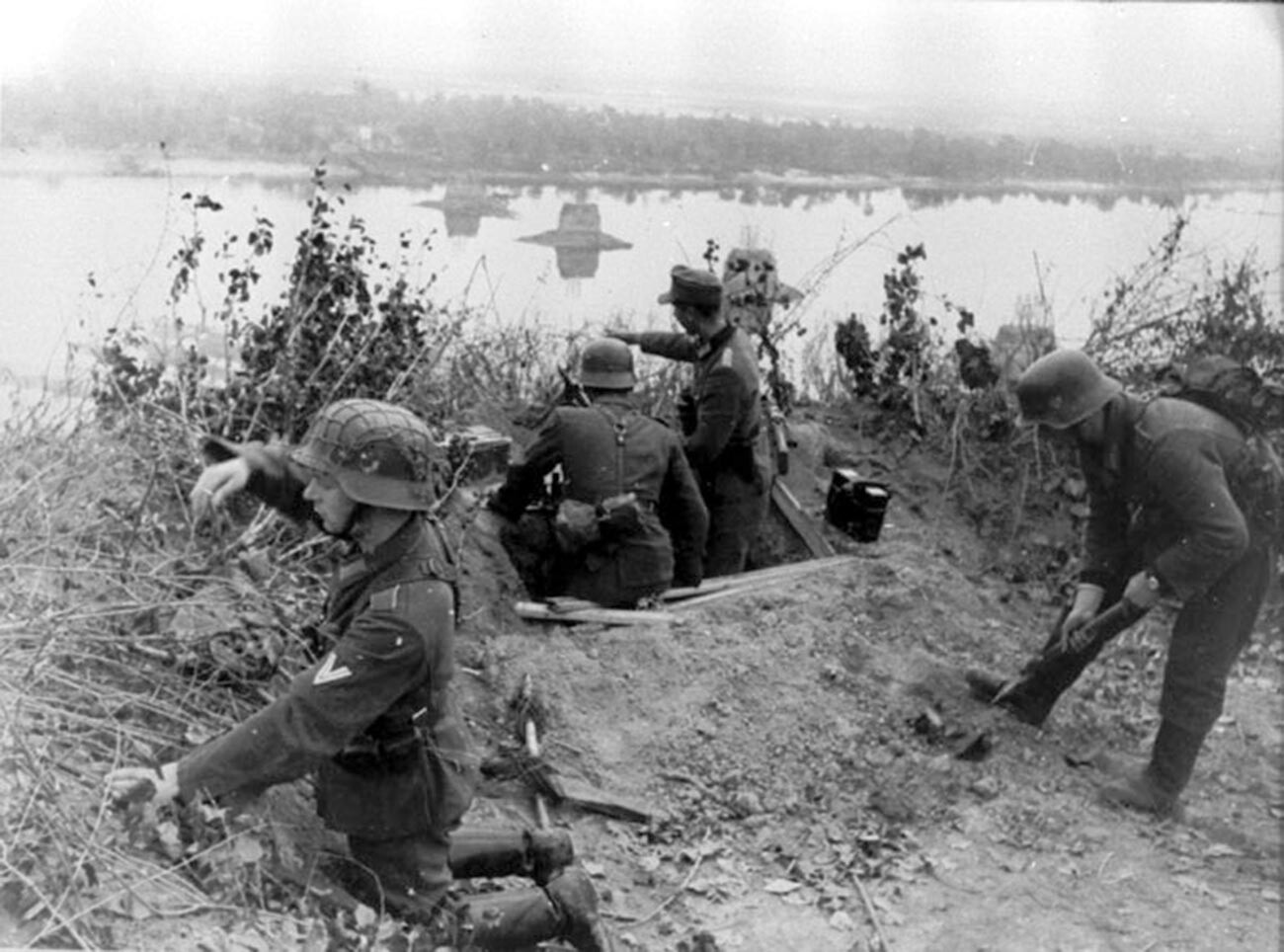
German soldiers during the Battle of the Dniepr.
Public DomainThe Dnieper airborne operation, mounted from late September to November, was one of the biggest Soviet airborne assault operations of the war years. Designed to provide support for the crossing of the river, it ended in failure as a result of fatal miscalculations: Around 3,500 of the 4,500 paratroopers were killed. “Six divisions and two panzer corps were concentrated there. And that’s what we were sent into… We dropped from the sky to fight, but we died in the air… Everything was ablaze there - night became day…” recalled Guards junior sergeant Pyotr Nezhivenko.
Following bitter fighting in the summer and fall of 1943, the Red Army succeeded in liberating almost the whole of left-bank Ukraine and also in seizing and extending several bridgeheads on the right bank of the Dnieper, thus breaching the Eastern Rampart in the south of the Soviet Union. Kiev, the capital of Soviet Ukraine, was liberated on November 6, with the Wehrmacht attempting unsuccessfully for a month and a half to regain it.
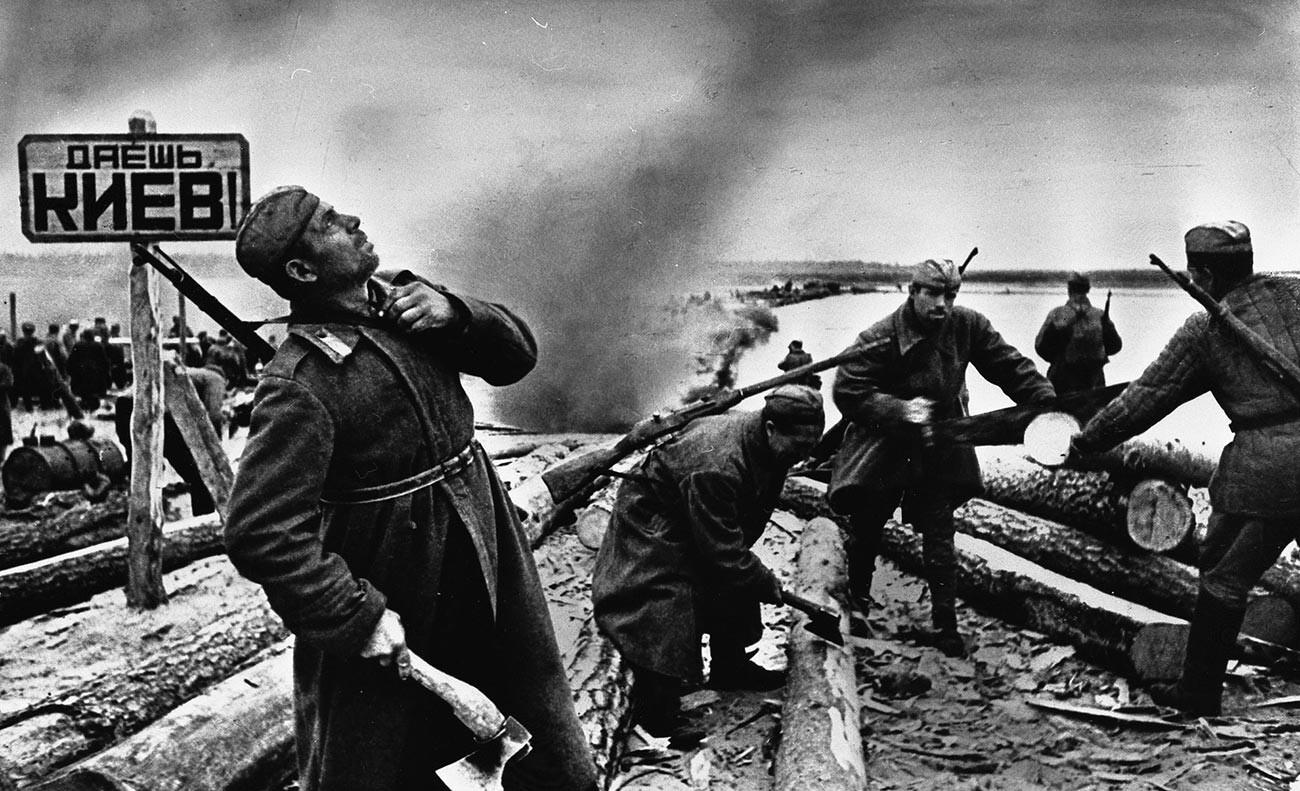
Soviet soldiers preparing the rafts to cross the Dnieper (the sign reads "To Kiev!").
Public DomainIn late November, the leaders of the “Big Three” - Joseph Stalin, Franklin Roosevelt and Winston Churchill - met in Tehran for their first joint conference. By this time, the allies understood that, after their victories in the battles of Midway and Guadalcanal, Stalingrad and Kursk, the strategic initiative in the war was firmly in their hands and the defeat of the “Axis” countries was only a matter of time. Having agreed on such immediate questions as the opening of a second front in France and the USSR’s involvement in the war against Japan, they confidently went on to discuss the post-war world order.
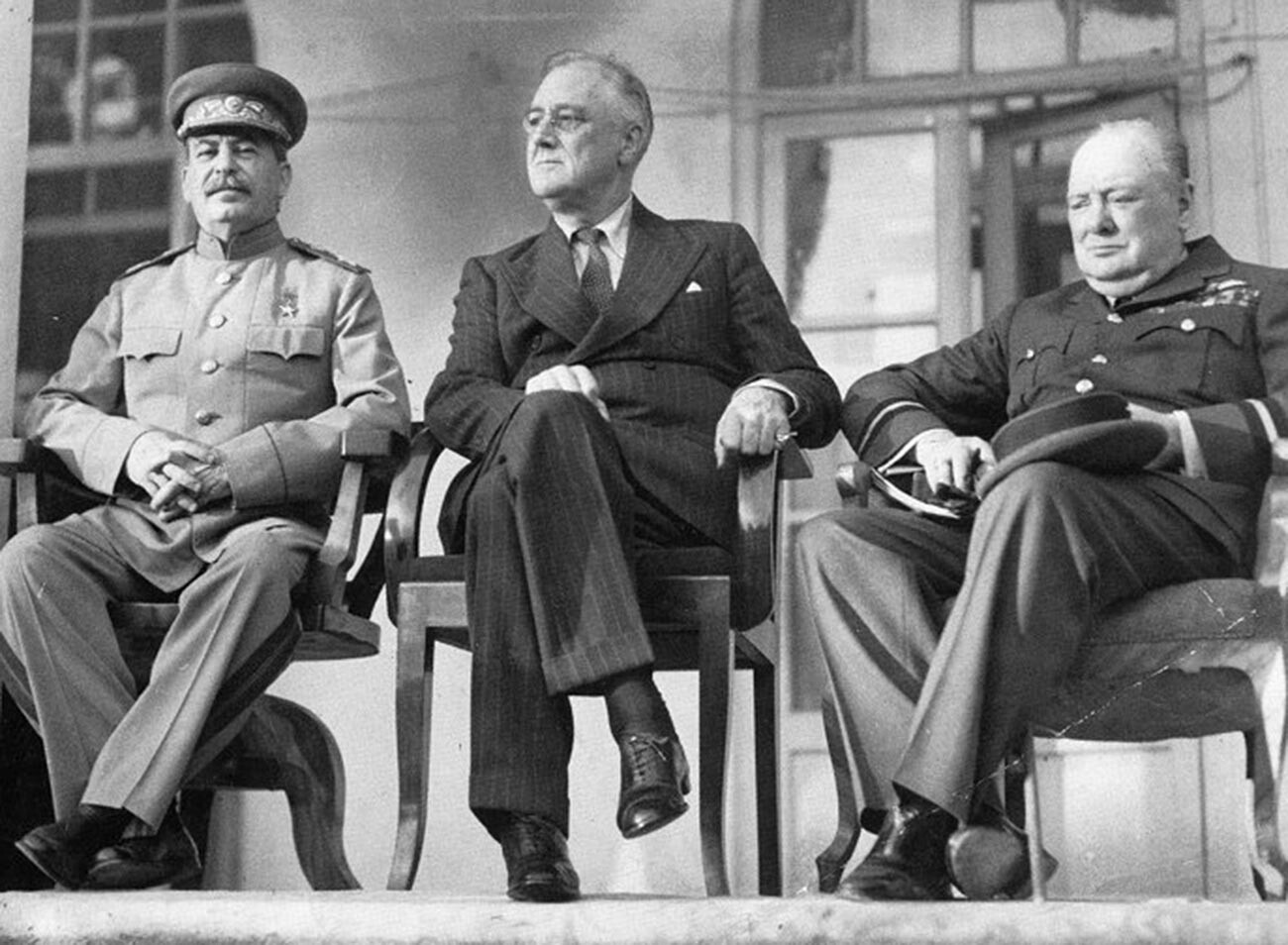
The "Big Three": From left to right: Joseph Stalin, Franklin D. Roosevelt, and Winston Churchill during the Tehran Conference.
Public DomainIf using any of Russia Beyond's content, partly or in full, always provide an active hyperlink to the original material.
Subscribe
to our newsletter!
Get the week's best stories straight to your inbox